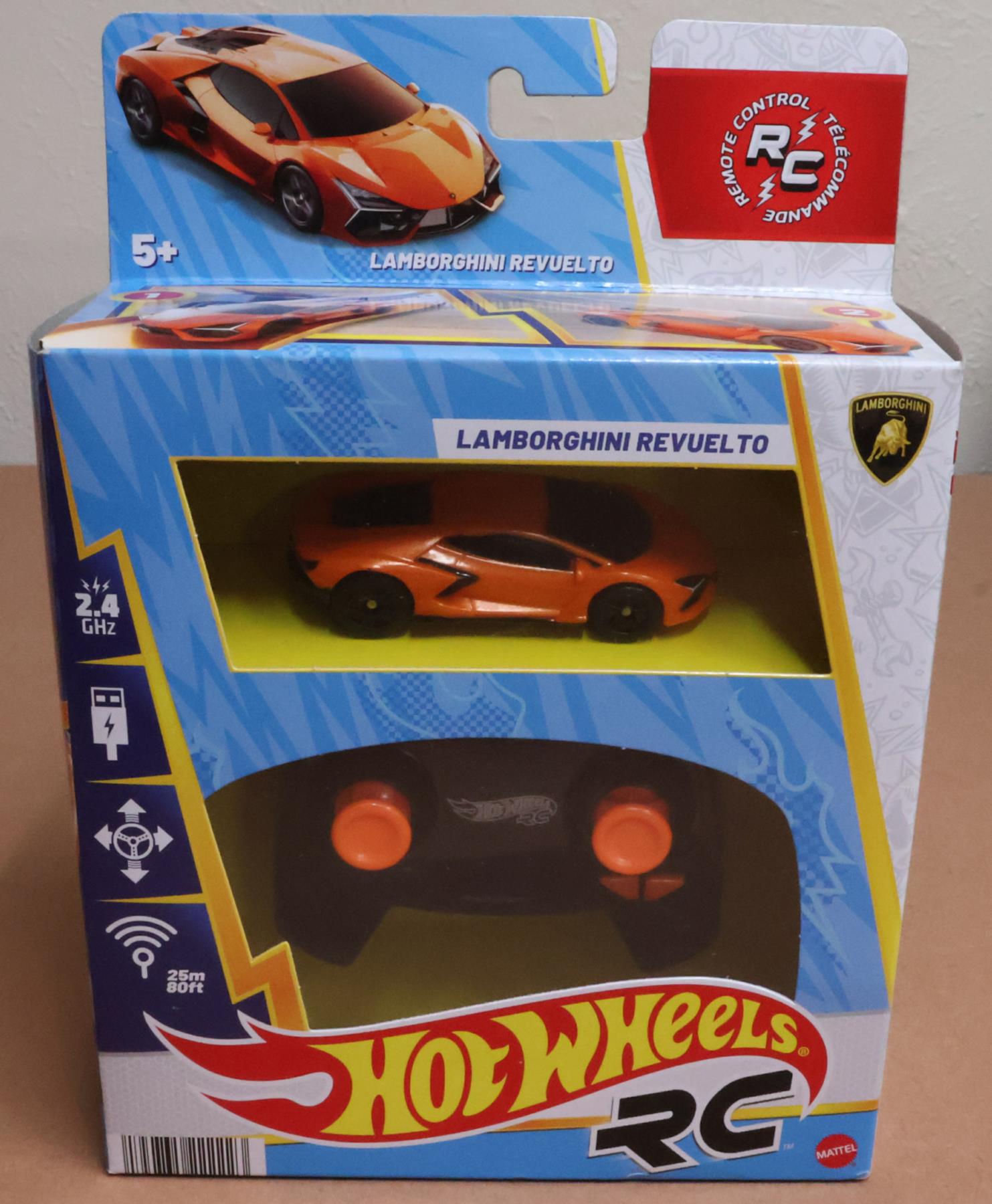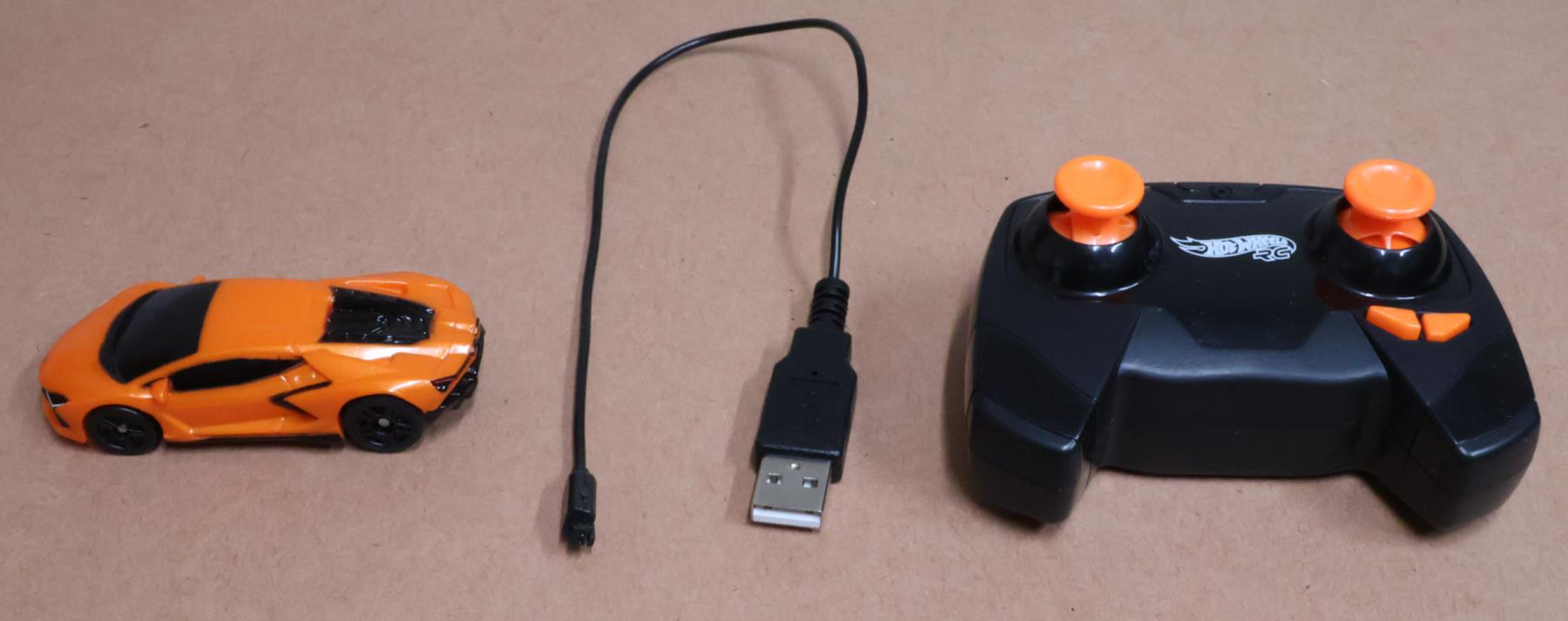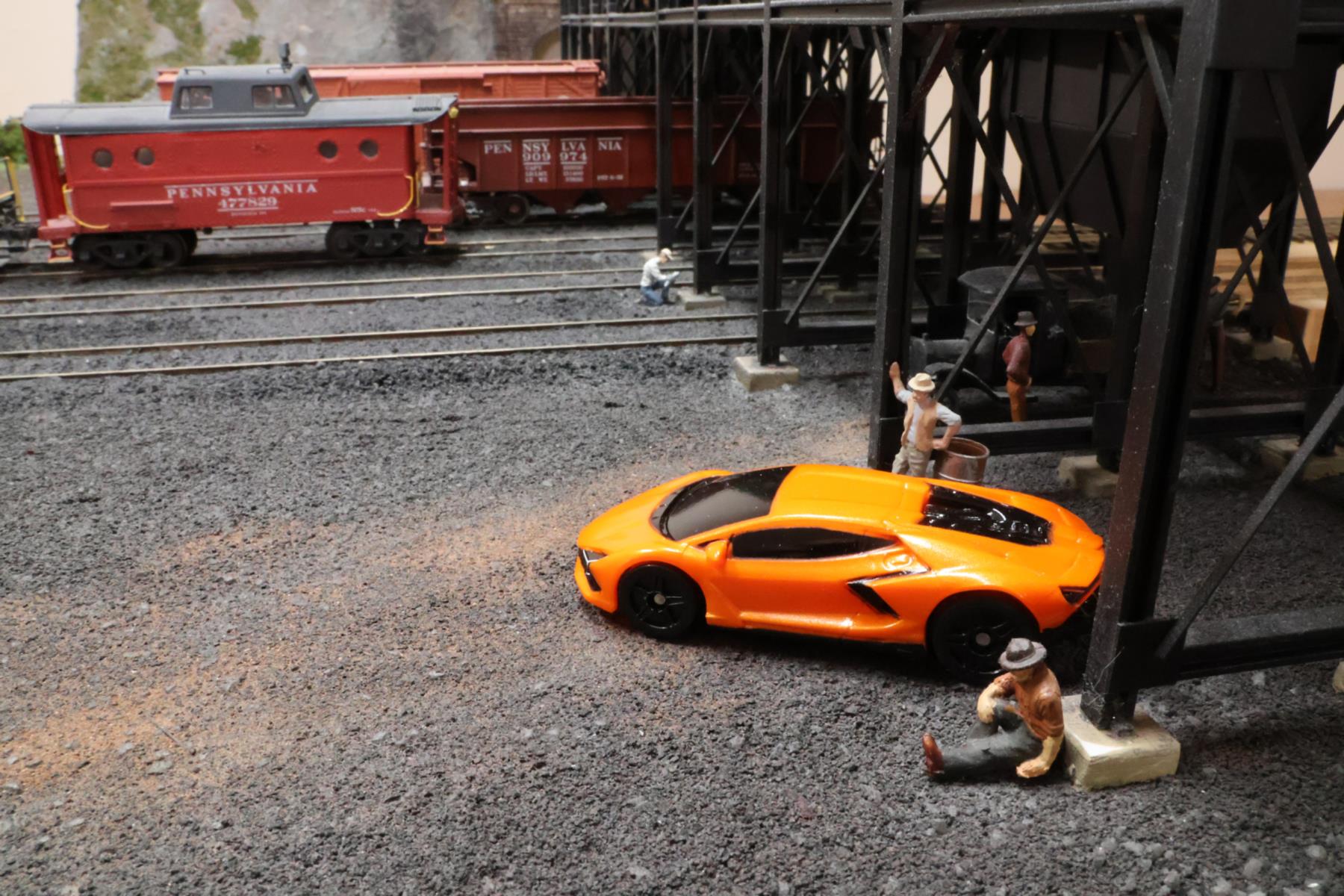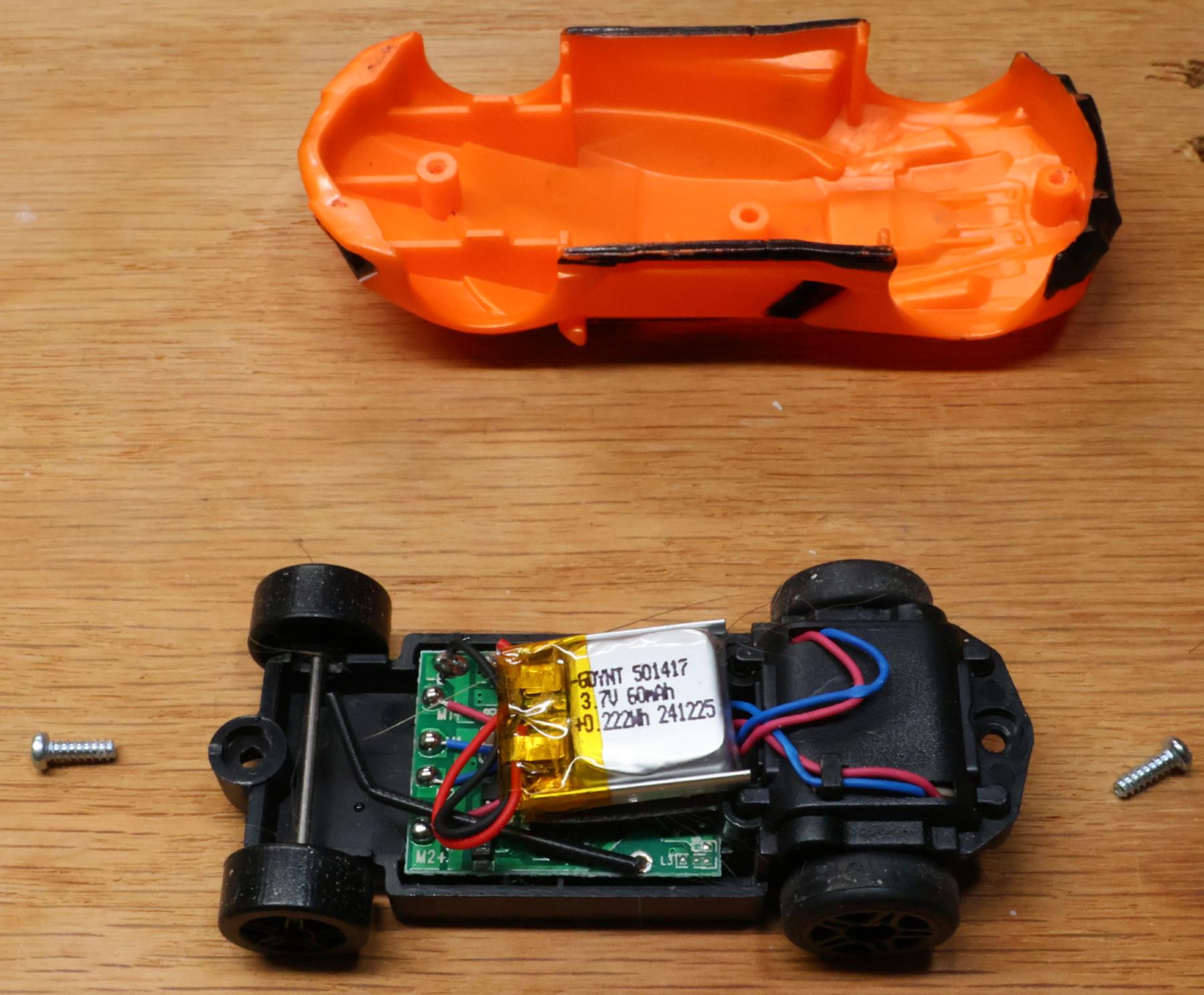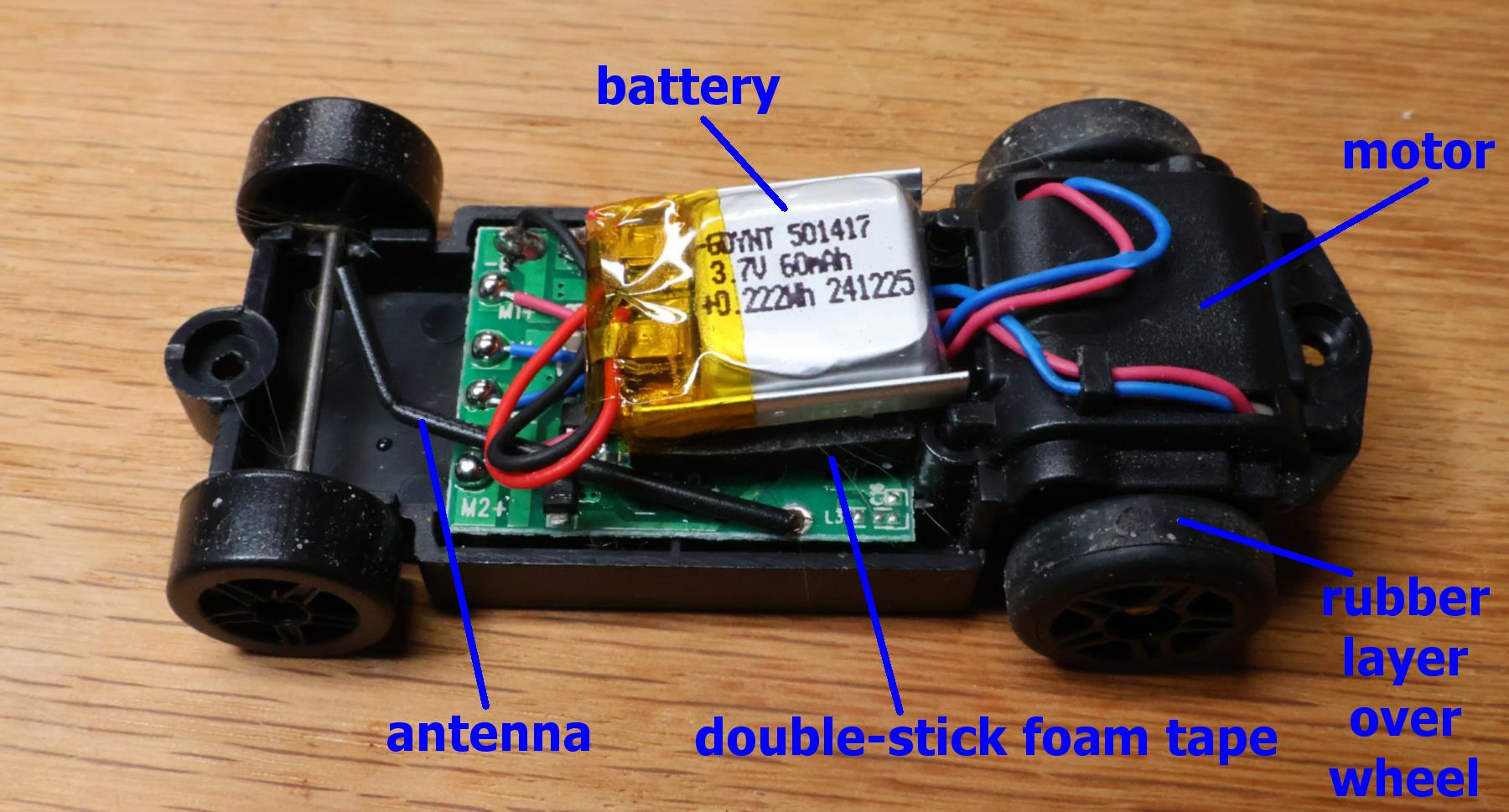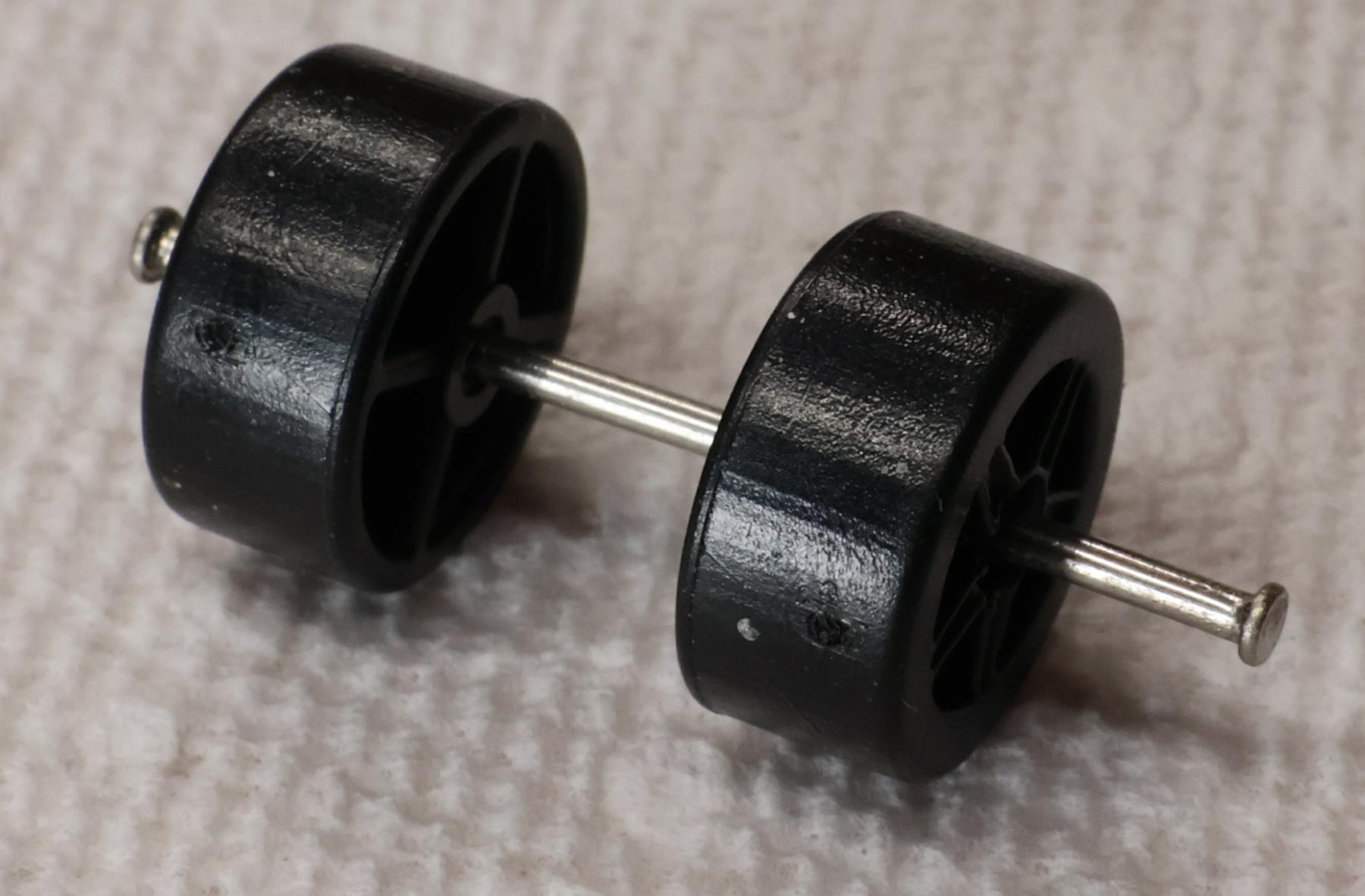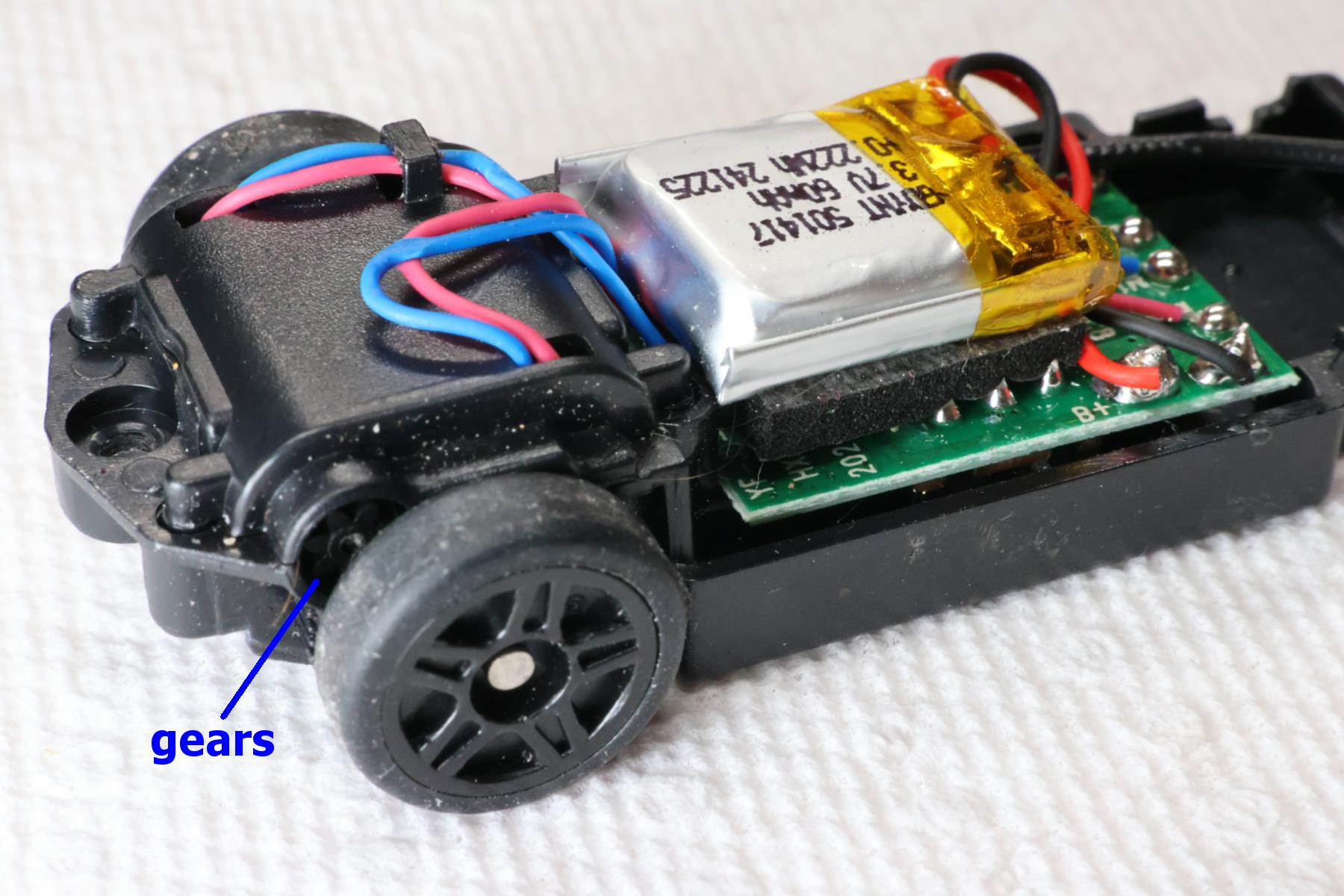Needless to say, this car does not fit my 1924-era layout. However, I had three reasons for buying this Mattel Hot Wheels radio-controlled car. The primary reason was to see if our five cats like to chase it around the floor (to give them some exercise). The second reason was to see how close Hot Wheels' claim is that this is a 1:64 model. The third reason was to see if I could take it apart to study how they managed to get a motor, gearing, and a battery into this tiny model. Shown is the box as it arrived (ordered from Amazon for $15). It comes with a gaming-console-style of controller.
(external link: Hot Wheels Revuelto)
(external link: Other R/C models)
The back of the box shows that the car can be run on Hot Wheels' track system or on a flat floor. The controller allows for forward and reverse (left joystick) and left and right (right joystick). There is a button on the front-right of the controller that pushes the car into "turbo" mode. The controller requires two AAA batteries (the controller automatically turns itself off when not in use for a little while). The company claims a control range of up to 80 ft (25m).
The box includes a short cable that can be used to charge the car's internal battery. It can be plugged into any USB plug. I plugged it into my PC's USB port and it charged the car in a few minutes. The car's bottom has the mini charging slot, the on/off switch, and a red LED indicating that it is charging, and a green LED indicating that charging has completed. The controller has two orange arrow buttons that do nothing, so that must be for a feature of another car.
After charging the car and placing batteries in the controller, I took it to the livingroom, and much to my surprise all five of our cats woke up from their afternoon slumber and started investigating the car, chasing it, and a couple hit it. Nearly any toy we have for the cats only interests one or two, so that it drew the attention of all five was a "win".
The second objective was to figure out whether this model was anywhere near 1:64 scale (or S-scale). Researching the actual car on the web site, I found the following:
Overall length: 16'3"; model 16'4"
Width without mirrors: 6'8"; model 6'7"
Height: 3'9"; model 4'3"
Wheelbase: 9'1"; model 9'6"
So, my conclusion is that the overall shape of the car is very, very close. The height and the wheelbase differences are likely due to the need for internal space to hold the tiny motor, the gearing, the battery, the circuit board, and the steering mechanism. Mattel makes several different types of cars with this R/C feature, but there is no guarantee that those cars are true 1:64 scale. In general Hot Wheels cars are considered "box scale", meaning, the model is sized to fit inside of a 3-inch long box, which means a regular passenger car can scale out close to 1:64. These R/C cars are sold at Target and Walmart, so take a ruler with you to see if the vehicle scales out correctly, if that is of interest to you.
The car is made out of plastic to keep its weight down. It drove very well. It runs fast, and even faster in "turbo" mode. Using the left/right joystick causes the car to both turn and accelerate, so it is intended to be used to induce a "drifting" style of driving. I suspect the car is intended to be used with the company's track system and so only forward and reverse is needed there. Left/right is just meant for doing "stunts" in an open area. It does take some practice to get used to it and to control it. On flat wooden flooring it worked great. We have tile flooring in the majority of our house, and the car would get stuck in the grooves whenever it was perpendicular or parallel to the groove. This is due to the model's low ground clearance, of course. It does not run on any kind of carpeting. The car is quiet.
(external link: Prototype Specs)
Reminiscent of the 1980s "Back to the Future" movies, the 2024 car appeared in 1924 Cannonsburg. The locals don't seem to be too surprised; maybe this time-travel thing happens more often that we previously thought.
Like any good engineer, I'm always interested in learning how things work. The third reason for buying this car was to figure out how in the world did they get all of the necessary stuff inside this tiny model. There are two metal screws that hold the body to the frame.
The first thing I noticed was the 60mAh lithium-ion battery that powers the unit. The circuit board holds the receiver and the logic. A black wire sticks out from it, which is the (presumably Bluetooth) antenna. The circuit board does not budge. The battery is held to the board using some thick foam tape. The motor makes up the entire rear end of the car. Please excuse the cat hair in the model, because I ran this for a while on the floor with the cats playing with it. I'll have to routinely open it up and clean it out.
Since the car is steerable, I was surprised to find that the front wheels are just loose on a solid axle.
This prompted me to take a closer look at the rear wheels. I noticed that there is a gear on the back of the motor housing that rotates when I rotated the rear wheel. When I looked at the other side of the car, there is a similar gear, but in the diagonally-opposite side. Manually rotating one wheel has no effect on the other wheel. So, that means they accomplish the steering by sending one wheel a forward message and the other wheel a reverse message. Steering is done by sheer force, which explains why it behaves so dramatically when you steer with the controller. This also explains the two sets of red and blue wires going to the motor. There is no visible way of removing the motor (it is encased in the frame's black plastic), so attempting to remove it will likely require breaking of the frame, which I am not willing to do on this functional model.
The rear wheel measures 1-13/64" in axle length. The motor casing itself measures 27/32" long and 9/16" wide and about that much tall (but that includes the plastic casing, since I can't remove the motor). There are no markings of any kind visible on the motor.
Using this motor with its gearing in another model, especially one that runs on rail, would require only the use for full forward or full backward. I don't know what the circuit does, but the battery produces 3.7 volts, so probably some sort of voltage or extra gearing reduction may be necessary for more prototypical speeds.


